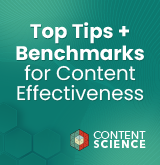
Advertisers, sales teams, and content marketers have come to rely on third-party cookies. But rapidly evolving consumer privacy protection trends (including the elimination of third-party cookies) are reshaping how companies reach their customers online.
Don’t panic. A forward-looking marketing and privacy plan can turn these changes into an opportunity to gain competitive advantage.
One of the first major online data privacy protection changes was the passage of the General Data Protection Regulation in the European Union in 2016. Two years later, California passed the California Consumer Privacy Act in 2018, and other states and countries started following suit. These increased privacy regulations began worrying the marketing world because the new laws limit advertisers’ ability to identify, segment, and reach their target demographics. Specifically, these laws require that customers have the ability to opt out of third-party cookie placement. While the laws do not block first-party cookies, they are more difficult to get because your cookies can only be placed when somebody visits your website.
In addition, increased regulatory oversight of commercial privacy practices led tech giants like Apple and Google to make drastic changes to their technical specifications. Third-party cookies are being phased out across all major browsers, and Apple recently announced users can opt out of nearly all targeting or tracking across their internet use.
All these factors seemingly combine to create a tougher content market.
But, new laws and the loss of third-party tracking data actually present a major opportunity for content professionals.
Pump up your content marketing program using privacy
Believe it or not, adhering to privacy best practices can enhance your content marketing program. Integrating your privacy and marketing processes requires some heavy lifting on the front end, but it will improve both the quality and efficacy of your content development and marketing strategies.
Here’s how.
Focusing your data collection
Forcing your teams to get intentional about what types of data are essential for marketing operations by using an opt-in system for marketing lists will:
- Tell you exactly what you’re collecting and why
- Reduce exposure from a data breach
- Cut costs (it’s less expensive to store less data)
- Remove extraneous data points to ensure the right content reaches the right audience on the right platform
Privacy best practices also include the creation of a preference center, a page in your app or on your website that lets your customers check the accuracy of their information in your system and choose how and when you contact them.
A preference center may not hold as much data as your old marketing database, but the data there will be more accurate. Additionally, knowing exactly how and when to contact consumers means your content is more likely to be delivered to a highly engaged customer.
That alone goes a long way to maximizing your ad spend.
Extending the lifespan of your content
Knowing how and when your users want to receive messaging can help you get off the ever-spinning hamster wheel of content development. Instead of churning out blog post after blog post, you can look at what content has performed well and repurpose it for each platform and audience.
For example, you can allow your users to opt in to daily, weekly, or even monthly updates from your company. You can also allow them to indicate the types of content they’d like to receive. Some might be interested in news, while others might prefer educational content or special offers. Seeing your users’ preferences before you create your content can help you maximize your marketing budget.
Building consumer trust in the post-cookie world
The biggest advantage privacy best practices offer to content marketers is the chance to build a relationship of trust with their audiences. Consumers are increasingly concerned about their privacy. For example, Pew Research has found that “79% of Americans are concerned about the way companies use their data. Forty-one percent of U.S. consumers regularly delete cookies, and 30% have installed an adblocker.”
Proving that you care about your customers by rigorously protecting their sensitive personal information is the fastest way to boost the credibility of your marketing program.
A natural partnership
Instead of treating your privacy practices like the enemy of your content and marketing strategies, reframe them as a natural ally that can dramatically improve the accuracy and efficacy of each advertising dollar.
Building your content program around privacy best practices will give you the accurate data you need to improve your advertising spend and maximize the efforts of your content marketing team.
Events, Resources, + More
Workshop: Are You Ready for AI?
Is your organization really ready for AI at scale? Let the Content Science team guide your leaders through assessing 4 areas of readiness.
Course: Prompting Text Generative AI
Learn how to bring out the full potential of text generative AI to create impactful content from this on-demand course.
Webinar: Benchmarks for Content Effectiveness
It's not about more content. It's about more effective content. Gain tips based on Content Science's unique research + experience.
The Ultimate Guide to End-to-End Content
Discover why + how an end-to-end approach is critical in the age of AI with this comprehensive white paper.






Comments
We invite you to share your perspective in a constructive way. To comment, please sign in or register. Our moderating team will review all comments and may edit them for clarity. Our team also may delete comments that are off-topic or disrespectful. All postings become the property of
Content Science Review.